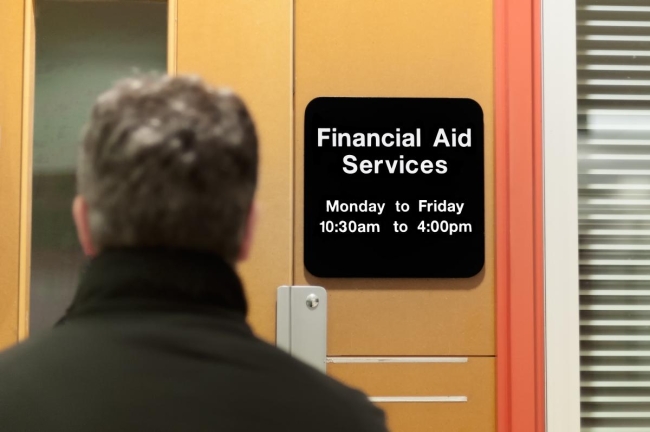You have /5 articles left.
Sign up for a free account or log in.

Istockphoto.com/PamelaJoeMcFarlane
In the 12 years since Congress last managed to renew the Higher Education Act, colleges have grown unaffordable, more graduates face stifling student debt and many do not graduate. The 2008 law has grown obsolete and does not deal with today's problems, say two lawmakers who played a leading role in the last reauthorization.
In a series of recommendations released Wednesday, a panel of former lawmakers and education experts, chaired by the top Democrat and Republican on the House education committee that helped write the last reauthorization law, called for billions more in student aid. The group, assembled by the Bipartisan Policy Center, would pay for it by phasing out education tax credits.
In addition to spending $90 billion more over 10 years to increase the maximum Pell Grant award and make more middle-income students eligible for the program, the task force, led by former California Democratic congressman George Miller, who chaired the Education and Labor Committee in 2008, and Howard McKeon, also of California, who served as the panel’s top Republican, proposed the creation of a $5 billion annual federal matching fund to encourage states to increase their own spending on higher education.
Though different in its details, and containing about $25 billion less over 10 years, the concept, in which states could get the federal grant only if they increased their own higher education spending, is similar to the federal-state partnership called for in the College Affordability Act, approved by the Democratic majority on the House education committee last October.
Along with concerns about price and student debt, the task force, in a 139-page report after 18 months of discussions, also lamented a lack of accountability of institutions. It criticized “an institutional accountability and quality assurance system that is insufficient and largely disconnected from the challenges” the system faces. The report called for a number of changes including requiring institutions to pay a fee based on how much their graduates owe.
The wide-ranging set of 45 recommendations also called for restructuring aid programs to better target those who most need it, including barring the wealthiest students from getting Pell Grants. “A disproportionate share of overall federal investment in higher education -- including the cost of tax incentives and loan forgiveness -- ends up flowing to higher-income individuals,” the report said.
In a call with reporters, Miller and McKeon acknowledged the uncertainty over whether a partisan Congress, embroiled in the impeachment trial, will be able to update what they see as an obsolete law, much less agree to the package of changes the task force wants.
The group included university leaders like F. King Alexander, president-elect of Oregon State University, and former New Mexico State University chancellor Garrey Carruthers, as well as political leaders such as former Vermont governor James H. Douglas, a Republican, and former Washington governor Christine Gregoire, a Democrat, both former chairs of the National Governors Association.
“It’s difficult to navigate the Congress of the United States at this period of time,” Miller said. “Whether a bill is ready to go or not to go, this conversation has to be had because it’s critical to families.”
McKeon said during the call, “There’s lots of good people in Congress, and they’re on both sides of the aisle. And there are some jerks, and they’re on both sides of the aisle,” adding, “I’m just hoping some statesmen will step up.”
The maximum Pell Grant now only covers 28 percent of the average tuition, the report said. Meanwhile, state appropriations for higher education fell from $7,146 per student in 1992 to $6,991 in 2018.
The task force’s members, however, were divided over whether the federal government should spend even more, on top of the $100 billion it already spends annually on student aid. It instead sought to make its recommendations budget neutral, proposing phasing out federal tax credits for educational expenses and student loan interest, saying they primarily benefit people with higher incomes. The move would save the federal government $200 billion over the next decade, which would pay for increasing spending on Pell Grants and the new matching funds for states.
In addition, the task force recommended a number of changes aimed at better targeting student loans to lower- and middle-income students, including limiting Pell Grants to the neediest students.
It also proposed making it harder to get other forms of aid or reducing the amount available through those programs. The report said Parent PLUS borrowers in the bottom income quartile have an average loan balance of $16,824, about twice their average salary of $7,748. The task force recommended making it tougher for parents to get loans by beginning to examine their ability to repay them. The task force instead proposed allowing low-income students to borrow more, saying they have a better chance of repaying loans than their parents do. The task also recommended the U.S. Department of Education examine capping Grad PLUS loans.
Tiffany Jones, Education Trust’s senior director of higher education policy, praised the idea of increasing Pell Grant spending and the creation of the state matching fund. “But restricting federal borrowing at a time of ever-increasing college costs could bring about negative consequences for students of color and students from low-income backgrounds,” she said in an email.
She worried also about putting institutions on the hook for their graduates' unpaid loans, saying it “could lead to reduced enrollment of students viewed as financially risky: students from low-income backgrounds with greater financial need and students of color who face discrimination in the labor market.”








